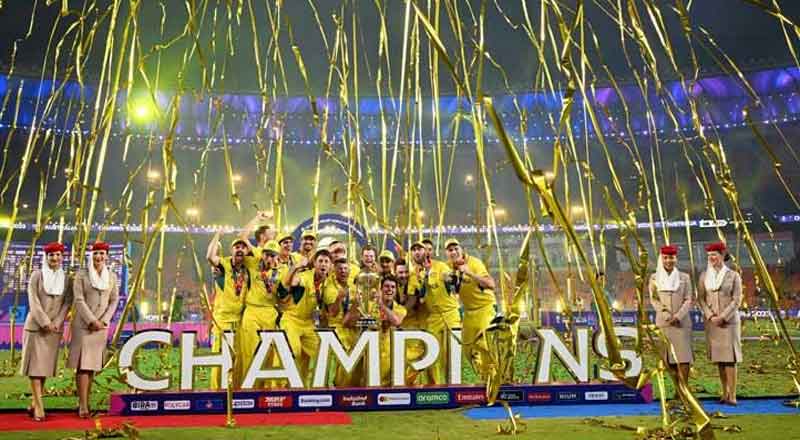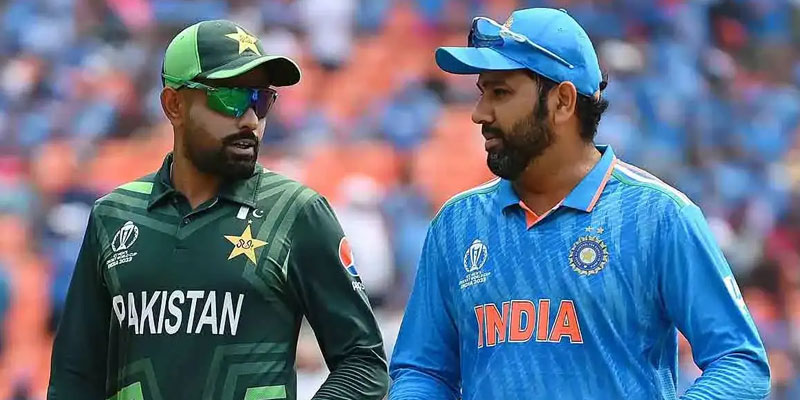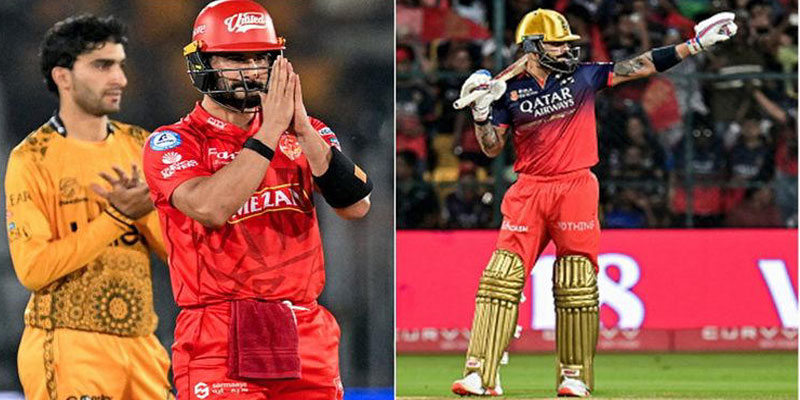Australia’s World Cup 2023 campaign had got off to a nightmarish start after losses in the first two games against India and South Africa. They then pulled things back in style after winning seven games in a row to qualify for the semifinals.
Australia’s impressive run in the ODI World Cup continued as they snapped India’s 10-match-long winning streak to claim their record-sixth World Cup title by defeating the Men in Blue by six wickets at the Narendra Modi Stadium in Ahmedabad on Sunday, November 19.
Travis Head (137 off 120 balls) was awarded the Player of the Match (POTM) as the southpaw played a magnificent knock under pressure during the run chase and took his side over the line.
Chasing a mediocre total of 241 runs to win, the Kangaroos got off to a jittery start as David Warner (7 off 3 balls), Mitchell Marsh (15 off 15 balls) and Steven Smith (4 off 9 balls) got out inside the first seven overs.
Warner was the first one to depart as India’s captain Rohit Sharma‘s gamble of bringing Mohammed Shami ahead of Mohammed Siraj to bowl with the new ball paid dividends. Warner paid the price of fishing outside of the off-stump and was caught by Virat Kohli at first slip. He was followed by Marsh but Australia suffered the biggest setback after losing Smith in the seventh over.
Smith was trapped in front of his stumps by the leader of India’s pace attack Jasprit Bumrah as the latter executed a well-disguised slower one to catch him off guard. India were breathing down Australia’s neck with three wickets back in the hutch for 47 and the Men in Green and Gold needed a miraculous rescue act from Head and Marnus Labuschagne.
Labuschagne (58* off 110 balls) and Head heard the rescue calls and responded with a 192-run stand for the fourth wicket that dented India’s hopes of ending their decade-long ICC drought. The Aussie duo took calculated risks and smartly manipulated the field to leave the Indian bowlers dazed.
Head took the role of the aggressor and punished the Indian bowlers whenever they erred in terms of line and length. The southpaw played some exquisite pull shots off the backfoot and also drove the Indian pacers straight down the ground when they bowled full to him. Head scored his 11th ODI ton and arguably the most priceless one of his entire ODI career to shatter the hopes of 1.4 billion Indians.
On the other hand, Labuschagne held the other end to prevent the fall of more wickets and kept the Indian attack at bay. The Aussies chased the total down in the 43rd over to reclaim the world title.
Earlier in the day, the coin fell in favour of the Australia captain Pat Cummins and he decided to field first keeping the dew in mind. The decision soon bore fruit for the visitors as Mitchell Starc drew first blood by dismissing Shubman Gill in the fifth over of India’s innings. Despite Gill’s early dismissal, Rohit kept his foot on the accelerator and didn’t let the Aussie bowlers exert their dominance.
Rohit played some quality strokes to enthral the Indian spectators but perished while trying to launch Glenn Maxwell down the ground for a maximum. He miscued the aerial shot and Head completed an excellent catch while running back from cover and pouching the chance safely. Rohit’s dismissal was soon followed by Shreyas Iyer’s downfall and India were reeling at 81 for the loss of three wickets after 10.2 overs.
Iyer’s dismissal brought Virat Kohli and KL Rahul in the middle and the duo scripted a rescue act. Virat (54 off 63 balls) and Rahul (66 off 107 balls) stitched a 67-run stand for the fourth wicket but couldn’t manage to take the attack to the Aussie bowlers.
Virat perished while trying to run a short of a good length ball from Cummins towards the third region as he chopped it onto his stumps. But the biggest setback happened when Rahul got out to Starc in the 42nd over. India desperately needed Rahul to inject some momentum towards the death but it never happened.
Ravindra Jadeja (9 off 22 balls) and Suryakumar Yadav (18 off 28 balls) also failed to script a dramatic turnaround for the Men in Blue as Australia folded India to 240 at the end.
(With inputs from agencies)





